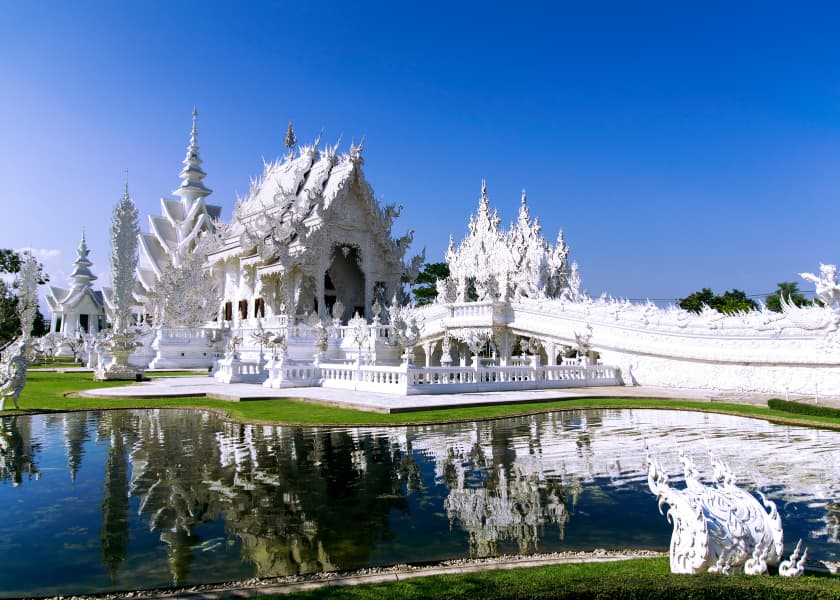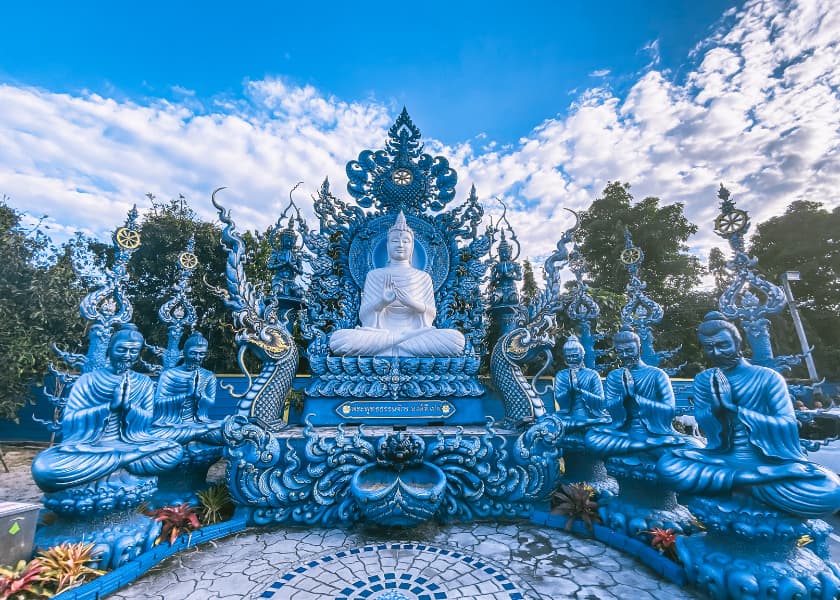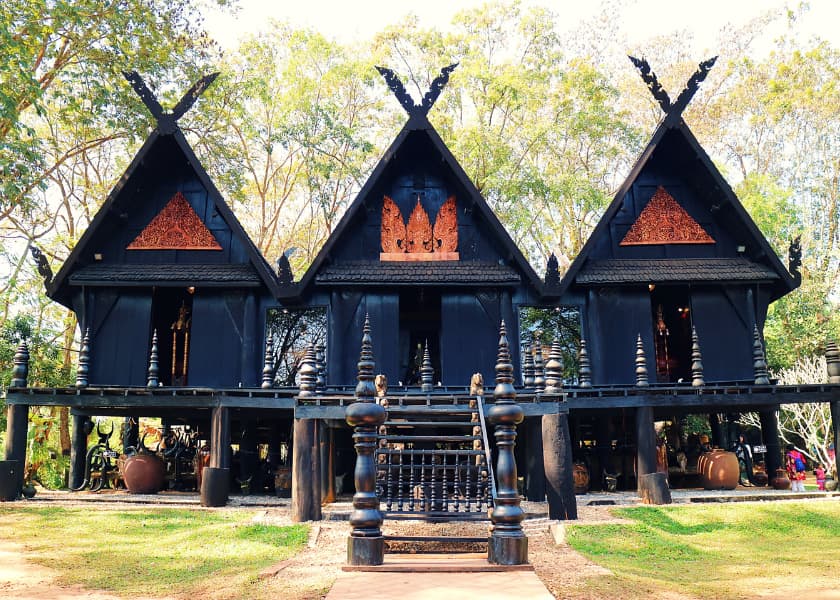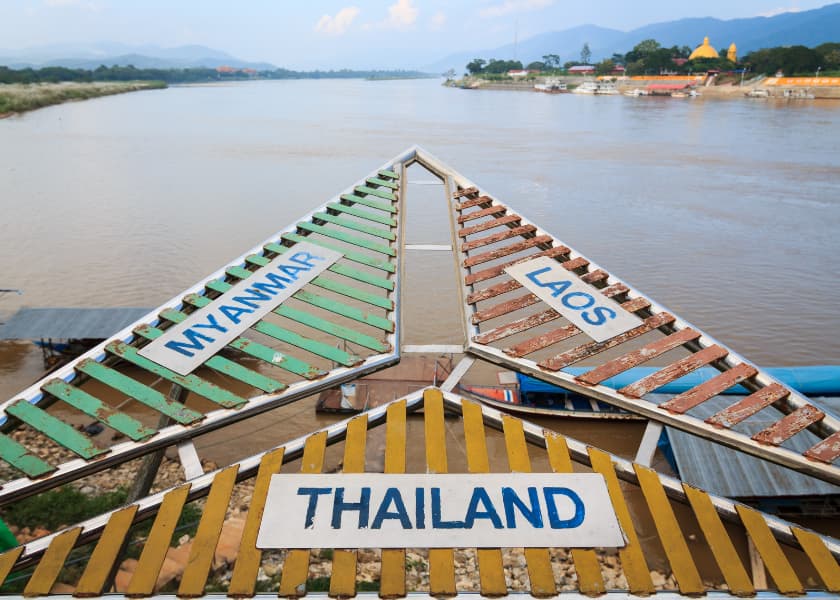Day Trip Ideas from Chiang Mai to Chiang Rai
Welcome to the captivating region of Northern Thailand, a place of vibrant culture, rich history, and stunning landscapes. Two jewels in this region are Chiang Mai, the modern yet historically charming city, and Chiang Rai, the gateway to the ethereal Golden Triangle. Both are awash with unique experiences that make this part of the world so enticing for travellers.
Chiang Mai, known as the 'Rose of the North,' serves as the cultural nerve centre of Northern Thailand. It's home to hundreds of intricate Buddhist temples, bustling markets, and an old city surrounded by ancient walls. Its tapestry is one of tradition and modernity, as Chiang Mai is a digital nomad's paradise, blending Wi-Fi with wats in an eclectic mix.
Conversely, Chiang Rai is often overshadowed by its larger sibling but is just as compelling. A city of profound historical significance, it was founded in the 13th century by King Mangrai. Today, Chiang Rai draws visitors with its unique attractions, like the contemporary White Temple, the vibrant Blue Temple, and the enigmatic Black House. This city offers a quieter, more serene experience, immersing you in a fusion of history and art.
Day trips from Chiang Mai to Chiang Rai provide a unique opportunity to experience Northern Thailand's diversity. These trips are a convenient way to explore the region's attractions quickly. From the mesmerising architecture of the temples, indulging in the local culinary delights at the Night Bazaar, or soaking in the rich history and culture, a day trip to Chiang Rai is an enriching supplement to your Chiang Mai experience.
Moreover, just a few hours apart, the journey presents a chance to appreciate Northern Thailand's beautiful landscapes, rolling hills, lush forests, and winding rivers. The contrast between the buzzing energy of Chiang Mai and the serene tranquillity of Chiang Rai makes this day trip a journey through both geographical and experiential terrains.
Chiang Rai Day Trip
A day trip from Chiang Mai to Chiang Rai offers a captivating journey through the heart of Northern Thailand. Before setting off on this adventure, it's important to understand the logistics and essentials to ensure a comfortable and enjoyable trip.
Travel Logistics (Duration, Transportation Options)
The distance between Chiang Mai and Chiang Rai is roughly 200 kilometres (125 miles), and the travel time can vary depending on your chosen mode of transport.
By Car: The quickest and most flexible way to travel is by private car or taxi, which typically takes about 3 hours. This option offers the convenience of setting your schedule and making impromptu stops to enjoy scenic landscapes.
By Bus: Regular buses run between the two cities, and the journey takes approximately 3-4 hours. The bus ride is affordable and comfortable, with air-conditioned coaches providing a direct link from the heart of Chiang Mai to central Chiang Rai.
By Tour: Organized tours offer hassle-free transportation and often include guided visits to key attractions, making them an excellent option for first-time visitors or those who prefer a structured itinerary.
Packing Essentials for a Day Trip
Packing right ensures a smooth and enjoyable day trip. Here are some essentials you should consider:
Clothing: Pack lightweight, comfortable clothing suitable for the tropical climate. Also, remember to carry a wrap or scarf for visiting temples, as respectful attire is required (shoulders and knees should be covered).
Sun Protection: Sunglasses, sunscreen, and a hat are essential to protect yourself from the strong Thai sun.
Water and Snacks: Although you'll find plenty of food options in Chiang Rai, carrying a reusable water bottle and some light snacks for the journey is always a good idea.
Cash and Cards: While credit cards are accepted in many places, carrying enough cash for smaller vendors, especially at markets or for street food, is wise.
Camera: Don’t forget your camera to capture the stunning sights of Chiang Rai!
Portable Phone Charger: To ensure your phone stays charged for navigation, photos, or emergency calls, bring along a portable charger.
Wat Rong Khun (The White Temple)
One of the highlights of any trip to Chiang Rai is undoubtedly Wat Rong Khun, more commonly known as the White Temple. This remarkable site, a visual masterpiece, serves as a poignant reminder of the constant evolution of art and spirituality.
Historical Background
Wat Rong Khun is a unique, contemporary Buddhist and Hindu temple that stands out for its striking white colour, a choice made by its creator, Chalermchai Kositpipat, to symbolise the Buddha's purity. This unconventional temple is unlike any other in Thailand, intertwining traditional Thai temple architecture with surreal elements and intricate details.
It was opened to visitors in 1997, and construction will continue until at least 2070. The project is entirely funded by Kositpipat, who views it as an act of devotion and merit. Wat Rong Khun is as much an art installation as a place of worship designed to provoke introspection about Buddhist teachings and the nature of desire, greed, and suffering.

What to See and Do
The Bridge of the Cycle of Rebirth: The main building is reached by crossing a bridge over a sea of outreaching hands, symbolising human desires. The crossing signifies the path from the cycle of death and rebirth towards the Abode of Buddha.
The Golden Building: Contrasting the main white temple, this ornate restroom building stands in gold, representing the body and worldly desires.
Ubosot: The main temple building, or ubosot, is a surreal, intricately detailed masterpiece filled with murals and sculptures that combine traditional and contemporary motifs, including surprising pop culture references. Photography inside the ubosot is not permitted, preserving the sanctity of the experience.
Gardens and Ponds: The meticulously maintained gardens and ponds around the temple provide peaceful areas for reflection, filled with art pieces and sculptures that continue the themes of the temple.
Visiting Wat Rong Khun is an immersive experience that blurs the line between art and spirituality. Its thought-provoking iconography and stunning architecture offer visitors a deeper understanding of Buddhist philosophy presented through a unique artistic vision.
Wat Rong Suea Ten (The Blue Temple)
A journey through Chiang Rai's spiritual landscape is complete with visiting Wat Rong Suea Ten or the Blue Temple. This modern architectural marvel is a testament to the innovative spirit characterising the city's religious structures.
Historical Background
Wat Rong Suea Ten translated as the "Temple of the Dancing Tiger," is a relatively new addition to Chiang Rai's collection of distinctive temples, completed in 2016. The temple gets its name from the tigers that purportedly roamed the area centuries ago, and the 'dancing' reference derives from the river that once flowed through the temple's location.
Under the guidance of local artist Putha Kabkaew, Wat Rong Suea Ten was designed to stand out. Its vibrant blue hue and intricate carvings and murals adorn its interior and exterior, making it an unforgettable sight. The blue colour represents the Dharma, the Buddha's teachings regarded as a universal truth, mirrored by the vastness and depth of the sky and the sea.

What to See and Do
Main Temple Building: The main building's radiant blue and gold façade is a sight to behold. Inside, you'll be greeted by a white, larger-than-life statue of Buddha. The interior walls are filled with intricate murals depicting traditional Buddhist themes and more modern interpretations.
Buddha Statues: The temple complex houses several striking Buddha statues, including outdoor ones, each in different poses and styles. These statues offer great photo opportunities while appreciating the intricate craftsmanship.
Architectural Details: Take time to observe the details of the temple's architecture, from the serpentine naga sculptures that line the staircase to the temple to the ornate carvings and decorative elements that cover the buildings.
Reflect and Meditate: Despite its popularity, the temple maintains a serene atmosphere, making it an ideal place for quiet reflection or meditation.
Wat Rong Suea Ten is a stunning example of how tradition and modernity can coalesce into something spectacular. This temple, a feast for the eyes, invites visitors to appreciate the artistry of its creation while delving into the philosophical meanings embedded within its vividly blue walls.
Baandam Museum (Black House)
Chiang Rai's intrigue lies not only in its beautiful temples but also in its unique museums. A visit to Baandam Museum, also known as the Black House, offers a walk on the darker, more mysterious side of Thai art and culture.
Unique Aspects
Baandam Museum is the creation of Thawan Duchanee, a renowned Thai artist. Unlike traditional museums, Baandam is a sprawling garden complex filled with nearly 40 eclectic structures, each showcasing the artist's avant-garde vision and deep-rooted Thai aesthetics.
Much like a Grimm's fairytale brought to life, the Black House is a complex of dark, wooden structures in various sizes and shapes. It gets its name from the predominant use of dark wood in its construction. The artist's lifelong collection of art, artefacts, animal bones, and skins displayed here reflect his fascination with the darker aspects of mysticism and mortality.

What to See and Do
Main House: The complex's most prominent structure is filled with various curiosities, from intricate wood carvings to animal hides and bones. Note: the main house might be closed during lunch hours.
Other Buildings and Structures: Explore the diverse range of buildings, each unique design and content. There's plenty to discover, from intricate carvings and stonework to bizarre and intriguing art pieces.
Artwork and Artifacts: Take time to appreciate the vast array of artwork and artefacts collected by Duchanee from his travels around the world. This collection offers insight into the artist's creative psyche and interpretations of life, death, and nature.
Gardens: Remember the beautifully landscaped gardens dotted with peculiar sculptures and installations. It's a perfect place to reflect upon the unusual and thought-provoking surroundings.
Baandam Museum is an unconventional art space that invites visitors to explore and interpret its strikingly macabre aesthetic.
Exploring the Golden Triangle
Rounding off your day trip, the Golden Triangle is a must-visit site. Known for its historical significance and geographical intrigue, this area is where the borders of Thailand, Laos, and Myanmar converge.
Background and Significance
The Golden Triangle is named for its association with the opium trade in the 20th century when opium was called "black gold." It was once the centre of the world's opium production and trade, a history that has significantly shaped the region. Today, the area is peaceful and attracts visitors with its unique geographical location and historical context.

What to See and Do
Golden Triangle Park: Visit Golden Triangle Park, where you can find several statues and plaques marking the history of the opium trade. It also offers the best vantage point to see the convergence of the three countries divided by the Mekong River.
Opium Museum: Delve into the area's dark history at the Hall of Opium Museum. This well-curated museum provides a comprehensive view of the opium trade's history, its social and economic impacts, and the efforts to eradicate it.
Boat Trip: Take a boat trip along the Mekong River for a closer view of the Laos and Myanmar banks. Some tours even offer a quick visit to a local market in Laos.
Buddha Statue and Scenic Viewpoint: Visit the giant golden Buddha statue at Sop Ruak. From this point, you can enjoy panoramic views of the Golden Triangle.
Local Markets: Explore the local markets around the Golden Triangle area. They offer a variety of goods, including local crafts, food, and produce, providing an insight into the local culture and lifestyle.
The Golden Triangle is a rich history, geography, and culture tapestry. As you look out over the confluence of countries, waters, and histories, you're reminded of this region's profound complexities and interconnectedness.
Local Food and Shopping at the Night Bazaar
No visit to Chiang Rai would only be complete with exploring its vibrant night markets. Among them, the Night Bazaar stands out as a bustling hub of food, shopping, and local culture, bringing a delightful end to your day of adventure.
Located in the heart of Chiang Rai, the Night Bazaar comes alive as the sun sets, transforming into a lively scene filled with lights, sounds, and enticing aromas. It's a place for commerce and a significant social gathering point for locals and tourists alike.
The Night Bazaar reflects the city's cultural diversity, with goods and food from different ethnic groups and neighbouring countries. It also serves as a platform for local artists and musicians, often hosting live performances that add to the lively atmosphere.
What to Eat and Buy
Food: The food court in the middle of the Night Bazaar is a culinary paradise. Try local dishes such as Khao Soi (a rich noodle soup with a curry-like broth), Sai Oua (Northern Thai sausage), and the ubiquitous Pad Thai. Sweet sticky rice with mango or coconut milk ice cream is a must for dessert.
Shopping: You'll find a wide range of goods for sale, from clothing and accessories to handicrafts and souvenirs. Look for locally made items such as Thai silk, silver jewellery, bamboo and wooden crafts, and traditional hill tribe textiles. Remember, bargaining is part of the shopping experience in Thailand!
Massage: After a long day of exploration, enjoy a traditional Thai massage available at several massage stalls in the market. It's a perfect way to relax and rejuvenate before heading back to Chiang Mai.
Performances: Enjoy the free cultural performances often held on the stage in the food court area. From traditional Thai dances to live bands, these performances are a great way to immerse yourself in the local culture.
Chiang Rai's Night Bazaar offers an unforgettable experience of flavours, colours, sounds, and textures. Whether you're looking for a tasty meal, unique souvenirs, or simply a cultural experience, the Night Bazaar is a perfect place to cap off your day trip to Chiang Rai.
Practical Information for Day Trippers
To make the most of your day trip from Chiang Mai to Chiang Rai, it's essential to plan and be aware of certain practical considerations. This section offers useful information to ensure your journey is enjoyable and hassle-free.
Best Time to Visit
Like the rest of Thailand, Chiang Rai experiences a tropical climate. The best time to visit is during the cool season from November to February, when temperatures are moderate, and rainfall is less frequent. However, even in the rainy season (June to October), Chiang Rai can be visited as rain showers are usually short and provide a refreshing break from the heat.
Cultural Etiquette to Observe
Thailand is known as the "Land of Smiles," and respect for others is deeply ingrained in Thai culture. Here are a few key points to observe:
Temples: When visiting temples, dress modestly. Shoulders and knees should be covered, and shoes should be removed before entering temple buildings. Show respect by not pointing your feet towards Buddha statues, as feet are considered the lowest part of the body in Thai culture.
Public Conduct: Thai people highly value politeness and public displays of anger or affection are typically avoided. Always remember to treat locals with respect and patience.
The Monarchy: The Thai monarchy is revered. Disrespectful comments or actions towards the monarchy can lead to severe penalties under Thai law.
Health and Safety Tips
Stay Hydrated: The tropical climate can dehydrate, especially if you're out exploring all day. Make sure to drink plenty of water.
Sun Protection: Use sunblock, wear a hat, and use sunglasses to protect yourself from the intense sun.
Food and Water: Stick to bottled water and avoid street food if you have a sensitive stomach. Most food in Thailand is safe to eat, but it's better to eat freshly cooked hot food to avoid foodborne illnesses.
Travel Insurance: It's recommended to have travel insurance that covers medical expenses. Thailand's healthcare is excellent, but medical costs can be high for foreigners.
Emergency Numbers: The general emergency number in Thailand is 191. For tourist police, dial 1155.
Being prepared and respectful ensures that your day trip from Chiang Mai to Chiang Rai is a rewarding and hassle-free experience. As you explore the historic and cultural landmarks, immerse yourself in the local culture, and remember to travel responsibly.
Related Articles
- Unforgettable Elephant Day Trip in Chiang Mai
- 15 Things Chiang Mai is Best Known For
- Inside Guide to Chiang Mai Old City
- Exploring the Flavours of Chiang Mai: A Guide to Local Foods and Dishes
- Long Weekend Escapes from Singapore to Chiang Mai
akyra MANOR CHIANG MAI HOTEL
22/2 Nimmana Haeminda Road Soi 9,
Su Thep, Muang Chiang Mai District,
Chiang Mai 50200, Thailand
T : +66 (0) 5 321 6219
M: Location




